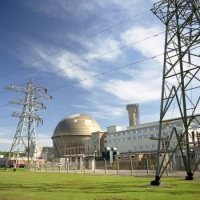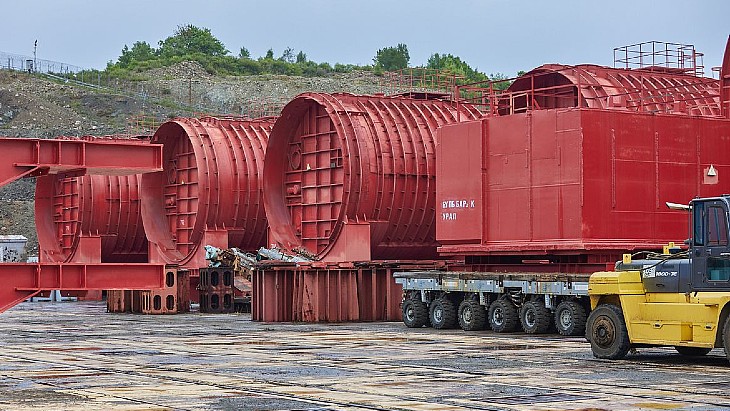Decommissioning campaign complete at UK reactor
 The iconic Windscale Advanced Gas Cooled Reactor (WAGR) has become the first nuclear power reactor to be decommissioned in the UK, with the completion of the final campaign of a twenty-year project.
The iconic Windscale Advanced Gas Cooled Reactor (WAGR) has become the first nuclear power reactor to be decommissioned in the UK, with the completion of the final campaign of a twenty-year project.The iconic Windscale Advanced Gas Cooled Reactor (WAGR) has become the first nuclear power reactor to be decommissioned in the UK, with the completion of the final campaign of a twenty-year project.
 |
| The iconic WAGR (Image: Sellafield Ltd) |
The WAGR, with its unique 'golf-ball' design, was built in the early 1960s and was a forerunner to the UK's second generation of nuclear reactors, the Advance Gas Cooled Reactor (AGR), 14 of which are operating in the UK today.
The reactor, with a gross capacity of 32 MWe, went critical in 1962 and was connected to the grid in 1963. Over an operating life that spanned 19 years, it generated some 3,257,500 MWh of electricity as well as being a test bed for the development of advanced fuel and components and providing operational experience of power production.
The final campaign of the reactor decommissioning project was completed at the end of May, with the removal the final section of the Outer Ventilation Membrane (OVM) from the reactor's concrete bioshield.
WAGR project manager Ian Cowan described the completion of the campaign as a "significant milestone" for the decommissioning project, drawing to a close twenty years of work to "safely dismantle, process and place into passive storage an industrial scale power generating nuclear reactor." Meanwhile Chris Halliwell, head of programme delivery Sellafield remediation and decommissioning projects Windscale, described the landmark as a "fantastic achievement" and a "true demonstration of the UK's ability to fully decommission nuclear power stations in a safe, sustainable and cost effective manner."
WAGR shut down in March 1981, and was selected as the UK's national demonstration exercise for the decommissioning of a nuclear power reactor. The first years of the decommissioning project were spent designing the necessary components, modifying the structure and installing the equipment. In 1999, it was decided that the dismantling of the reactor core and pressure vessel should begin after the project team had completed all testing of the principle methodology to remotely dismantle the components.
The first six of ten decommissioning campaigns were completed by 2002. The dismantling and decommissioning skills built up through the WAGR project will be used in other high-hazard reduction projects across the Sellafield site and the wider nuclear industry.
The completion of the project required a great deal of technical ingenuity and persistence, but has proved that the decommissioning of power reactors soon after shutdown can be safely achieved with currently available technology, Peter Law, Windscale senior project manager, said. "The WAGR project team should be immensely proud of their achievements," he added.
Decommissioning is under way at 25 other UK nuclear power reactors, mostly Magnox gas-cooled reactors but also including two fast breeder reactors at Dounreay and a 92 MWe prototype steam generating heavy water reactor (SGHWR) at the Winfrith research site. The first solely commercial nuclear power plant in the UK to undergo extensive decommissioning is the two-unit Berkeley plant, which closed in 1989. In late 2010, the defuelled reactors were placed in passive state, known as Safestore, and will be monitored and maintained until site clearance begins in around 2074, by which time residual radioactivity will have decreased significantly.
Researched and written
by World Nuclear News
_17992.jpg)
_75800.jpg)







_88592.jpg)
_66488.jpg)

